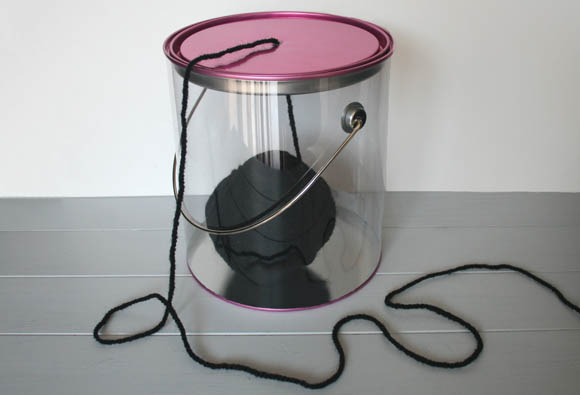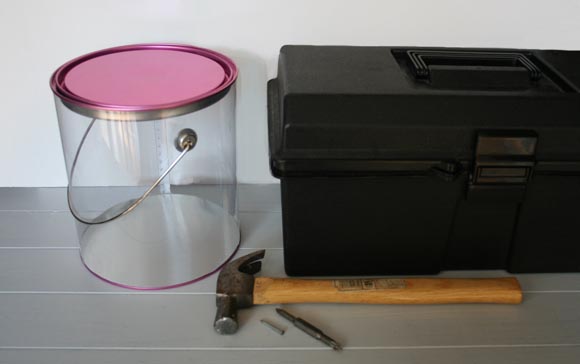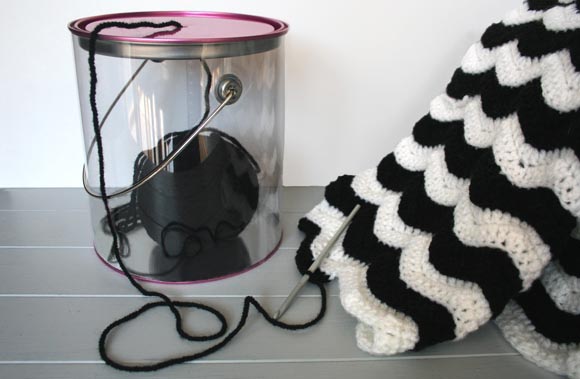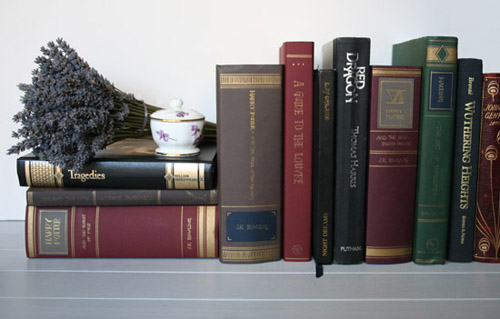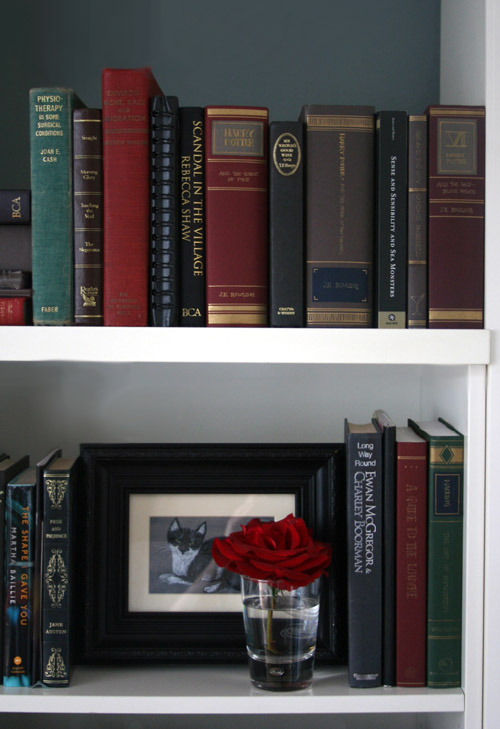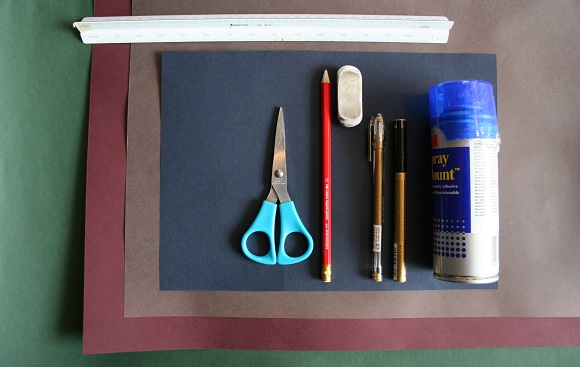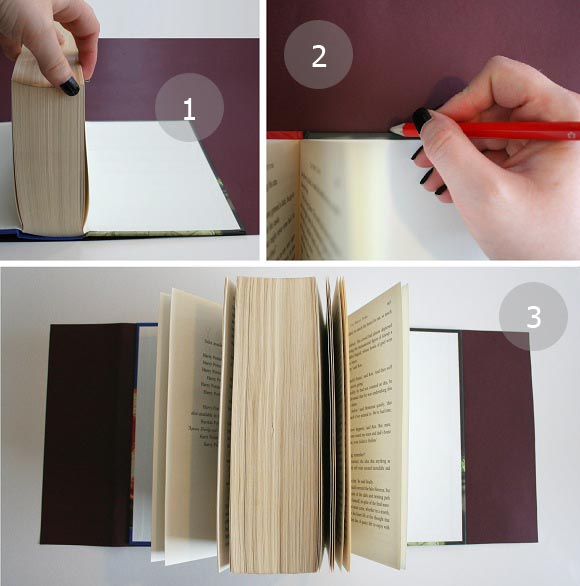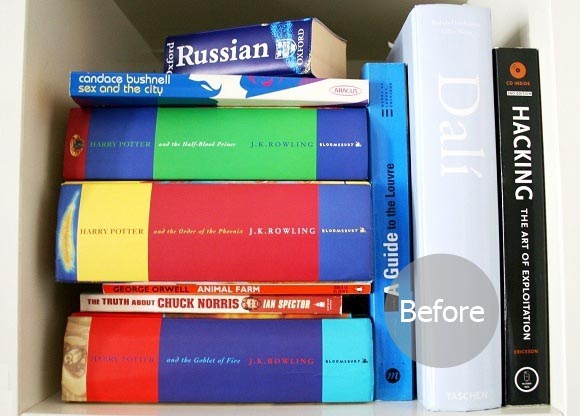
This isn’t a new project to me. I first came up with this deceptive dust cover idea close to seven years ago when I lived with my folks: I had a shelf in my bedroom holding everything I held dear. I am a neat freak and color coordination is paramount, so some of those things I held dear weren’t exactly, how do I say, appealing to my corneas. I created faux dust covers to cover up unsightly books and cd’s that I loved.
I’d like to say I don’t judge a book by its cover, but if it’s too bright for my living room I will hide it behind other books. Dark moody colors appeal to me more than bright ones – to each his own. So I sat down and over the past week I made covers for the books I enjoy too much and were making me feel guilty for stuffing them at the back of my bookcase – but no longer. Below I’ve written a little tutorial on how to make your own dust covers should you like to revamp any books of your own.
What you’ll need : enough heavy weighted craft paper {one up from construction paper} to cover your book{s}, ruler, scissors, pencil and eraser, thin gold pen, gold marker, and some form of adhesive – this is only used for adding another layer of paper to your cover – NOT to glue the dust cover to your book. We don’t want that.
Step 1 : lay your book flat on the construction paper -completely flat- ensuring the spine is flat as well, otherwise you won’t get a truly accurate width of your book. Align with the bottom of the construction paper, this way you don’t have to cut out the entire shape of the book. Step 2 : on the construction paper, roughly mark the height of your book. Make sure to leave sufficient space on either side of the book to fold the side flaps (as seen in step 3). Step 3 : with a ruler, draw a lovely straight line for the top, and cut out. You will be left with a piece of paper the same height as your book, but wider on each side (above).
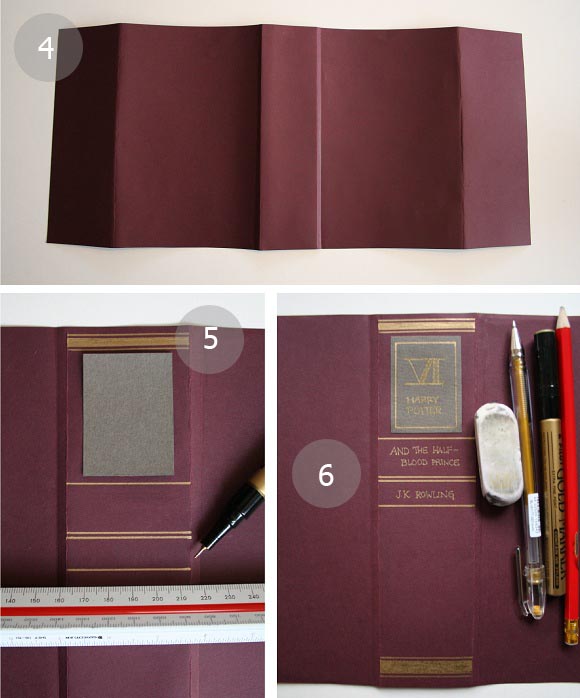
Step 4 : fold the construction paper template around the book cover. What I do next is put pressure along the edges to make sure the folds are defined, as well as use my finger nail to define the edge of the spine. Take the cover off, and you end up with this.
Step 5 : using a ruler and your gold marker, draw a design down the spine of your cover. Here’s where your creativity comes in. I took
inspiration from some of my favorite old books, alternatively you can
find images of old books. I also cut out a little label for added charm.
Step 6 : with your pencil, lightly mark where you will place the text. Once you’re happy with it, go over with the thin gold pen. Affix any labels if you choose, et voila, you’re finished!
I’ve mingled these books in with my little existing collection. I have a lot of black bound books already, so I didn’t make any for this project. I’m also working on revamping my book shelves. It doesn’t sound exciting, but it is to me. I’m considering some interesting alternatives … Happy crafting! 🙂

